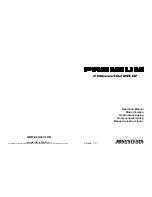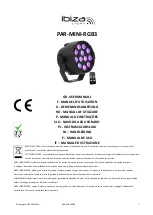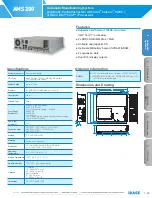
4.2.1.1
Single Disc Units
Apply approximately 25 PSIG (1.7 bar) air
pressure to the cylinder to engage the
tensioner. Measure the "X" gap between the
cylinder (19) and the pressure plate (13) or the
gap "Y" between the pressure plate (13) and the
mounting flange (2) as shown in Figure 7. If
either gap exceeds the limits shown in Table 10,
the friction discs and/or wear plates must be
inspected to ensure that the wear limits listed in
Table 14 have not been exceeded.
4.2.1.2
Multi-disc Units
Apply approximately 25 PSIG (1.7 bar) air
pressure to the cylinder to engage the
tensioner. Measure the gap "X" between
the cylinder (19) and the pressure plate (13)
to determine if adjustment may be required.
Measure the "Y" gap between the pressure plate
(13) and the reaction plate (31), the "Y" gap
between the reaction plate (31) and the mount-
ing flange (2), and the "Z" gap between the reac-
tion plates (31) as shown in Figures 8, 9 and 10.
If the "X
worn
" dimension has been reached or
exceeded and the "Y" or "Z" dimensions have
not reached the limits shown in Table 10
AND
none of the friction discs are worn to the bottom
of the wear groove / step, wear adjustment is
required. It is also recommended that wear
plates be inspected to ensure that the wear lim-
its listed in Table 13 have not been exceeded.
If wear adjustment is not made, the
piston may extend out of the cylinder
beyond an acceptable operating range,
resulting in loss of torque and/or seal
damage.
If the "Y" or "Z" dimensions have been
reached or any of the friction discs are worn
to the bottom of the wear groove (or step), the
tensioner should be taken out of service and
rebuilt with new components as required.
4.2.2
Adjustment Procedure
Wear adjustment can be conducted without full
disassembly of the WCB2 tensioner. The wear
adjustment spacers are slotted to allow for easy
removal with a chisel.
Before performing any maintenance
work on the WCB2 unit, make sure that
the machinery will remain in a safe
position. Failure to do so could result
is serious injury or possibly death.
Note: It may be necessary to disconnect air and
water supply lines to prevent damage to the
hoses and binding of components during the
adjustment procedure.
4.2.2.1
Wear spacers should be removed in complete
sets only (one from each stud location). Mark
the spacers to be removed to avoid confusion
during removal.
Removal of spacers in quantities other
than complete sets (layers) will result
in severe damage to WCB2 compo-
nents during re-assembly, and could
cause the brake to not function
properly.
4.2.2.2
If so equipped, remove the support bracket from
the cylinder (19) end of the unit.
4.2.2.3
Loosen the locknuts (18) evenly (ONE TURN AT
A TIME) and in an alternating (cross wise)
pattern to prevent binding of the cylinder on the
studs. Continue to loosen the locknuts until the
force of the release springs is relieved, allowing
for access to the wear spacers. It may be neces-
sary to push the pressure plate and reaction
plate(s) away from the mounting flange so that
the release springs can be moved to gain
access to the wear spacers.
Figure 6
Dust / Wear
Grooves
WCB 11070 VP 4.2 Format
15
© Copyright Eaton Corp., 2003. All rights reserved
April 2002 (Revised June 2003)
















































